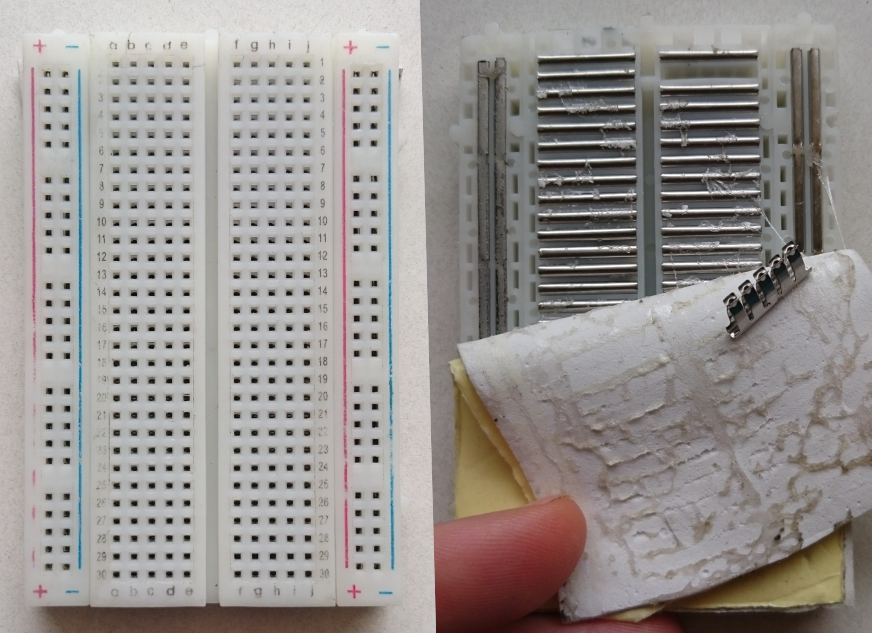During Activity 6 we observed some of the students still struggling to make electrical connections on solderless breadboards. To address this, we decided to dive into the fundamentals of how they work. In Activity 7 we discussed conductors and insulators, and the students used a buzzer circuit to test the conductivity of different materials around the classroom including pencil graphite, paper clips, wooden desks, glass windowpanes, coins, and anything else they could think of. They shared their findings on the board and the students pointed out some common features: metals tend to be conductors, and plastics or organic materials tend to be insulators.

Next they mapped the conductivity of each point on a breadboard to understand exactly how the points are connected together. We were happy to hear the students guessing that metal strips connect the points inside the board. Their hypothesis was proven correct when we disassembled a breadboard to show the rows of metal inside. Hopefully the next time the students build a breadboard circuit they will remember this hands-on look at how the connections are made.

We also linked these observations to circuit diagrams by discussing the idea of a node: a point where parts of a circuit are connected together with conductors (e.g. wires or a breadboard row). This is a concept we’ll visit again in the near future.
We had almost all the Himalayan Makers Guild members in attendance. Only 4 boys and 1 girl missed Activity 7, leaving a total of 21 boys and 36 girls (37%:63%). It was our first activity after reorganizing the groups to be a mix of classes, and assigning student Team Leaders helping out with the activities. I’ll discuss this further in an upcoming post!
The students are now on holiday for a couple of weeks, so we’ll resume our activities on October 14th. The pause in activities is a welcome opportunity to catch up on some writing, activity planning, and setting up our classroom network of Raspberry Pis.
Activity 7 was created as a Free Cultural Work and is available for use and adaption under the CC BY-SA 4.0 license. As per the constraints outlined in Activity 1, the activity does not require consistent access to electricity. The cost of one set of parts was $7.66 CAD and 10 sets were shared across 57 students split into four sessions. This brought the parts-cost per student to $1.34 CAD.

